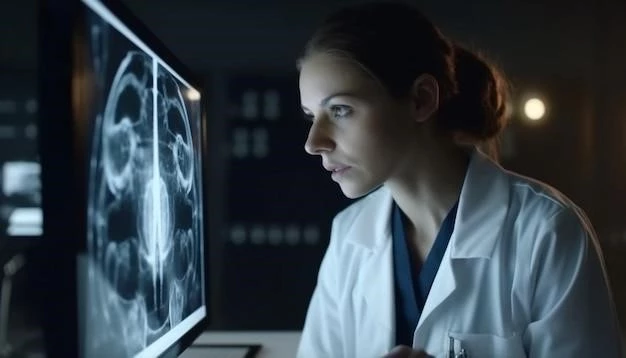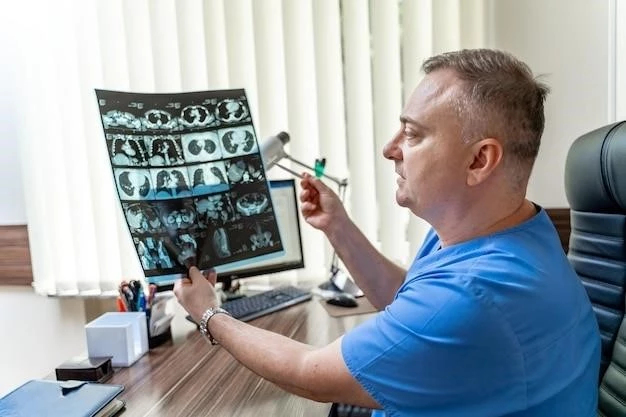Introduction to Microcephaly-Brachydactyly-Kyphoscoliosis Syndrome
The Microcephaly-Brachydactyly-Kyphoscoliosis Syndrome is a rare genetic disorder characterized by profound intellectual deficit in association with microcephaly, short stature, brachydactyly type D, and kyphoscoliosis․ It is likely transmitted as an autosomal recessive trait․
Definition and Characteristics
The Microcephaly-Brachydactyly-Kyphoscoliosis Syndrome is a rare genetic disorder characterized by profound intellectual deficit in association with microcephaly, short stature, brachydactyly type D, and kyphoscoliosis․ It is likely transmitted as an autosomal recessive trait․
Clinical Features of the Syndrome
The Microcephaly-Brachydactyly-Kyphoscoliosis Syndrome is characterized by profound intellectual deficit, microcephaly, brachydactyly type D, and kyphoscoliosis․
Profound Intellectual Deficit
The Microcephaly-Brachydactyly-Kyphoscoliosis Syndrome is associated with a significant intellectual deficit, impacting cognitive abilities and overall development․ This characteristic is a key feature of the syndrome․
Microcephaly
Microcephaly is a distinctive feature of the Microcephaly-Brachydactyly-Kyphoscoliosis Syndrome, characterized by an abnormally small head circumference compared to age, sex, and ethnic background․ It is often associated with brain development issues and cognitive impairments․
Brachydactyly Type D
Individuals with the Microcephaly-Brachydactyly-Kyphoscoliosis Syndrome present with brachydactyly type D, a specific shortening and broadening of the distal phalanges of the hands․ This characteristic is a key clinical feature of the syndrome․
Kyphoscoliosis
The presence of kyphoscoliosis is a defining feature of the Microcephaly-Brachydactyly-Kyphoscoliosis Syndrome․ This condition involves the abnormal curvature of the spine in both the sagittal and frontal planes, leading to potential respiratory and mobility issues․
Genetic Basis
Microcephaly-Brachydactyly-Kyphoscoliosis Syndrome likely follows an autosomal recessive inheritance pattern, with genetic factors contributing to the development of the condition․
Autosomal Recessive Inheritance
The Microcephaly-Brachydactyly-Kyphoscoliosis Syndrome is believed to follow an autosomal recessive inheritance pattern, indicating that both parents carry a mutated gene that results in the syndrome when inherited by the offspring․

Viljoen Kallis Voges Syndrome
Viljoen Kallis Voges Syndrome, also known as Microcephaly-Brachydactyly-Kyphoscoliosis Syndrome, is a rare genetic disorder characterized by severe intellectual disabilities, microcephaly, short stature, brachydactyly type D, flat occiput, down-slanting palpebral fissures, low-set prominent ears, a broad nose, and kyphoscoliosis․
Rare Genetic Disorder
Microcephaly-Brachydactyly-Kyphoscoliosis Syndrome, also known as Viljoen Kallis Voges Syndrome, is an exceptionally rare genetic disorder characterized by severe intellectual disabilities, microcephaly, short stature, brachydactyly type D, a flat occiput, down-slanting palpebral fissures, low-set prominent ears, a broad nose, and kyphoscoliosis;

Diagnosis and Specialist Referrals
Diagnosis of the Microcephaly-Brachydactyly-Kyphoscoliosis Syndrome involves clinical evaluation, genetic testing, and imaging studies․ Specialist referrals to geneticists, neurologists, orthopedic surgeons, and other healthcare providers are crucial for comprehensive management․
Diagnostic Criteria
The diagnosis of the Microcephaly-Brachydactyly-Kyphoscoliosis Syndrome includes clinical evaluation focusing on specific features such as intellectual deficits, microcephaly, short stature, brachydactyly type D, flat occiput, down-slanting palpebral fissures, low-set prominent ears, a broad nose, and kyphoscoliosis․ Laboratory tests, genetic analysis, and imaging studies are essential for accurate diagnosis and prompt specialist referrals․
Support Groups and Communities
Support groups for Microcephaly-Brachydactyly-Kyphoscoliosis Syndrome offer valuable resources, advocacy, and information for individuals and families dealing with this rare genetic disorder․ These communities provide emotional support, access to educational materials, and a platform to connect with others facing similar challenges․
Advocacy and Information
Support groups and communities dedicated to Microcephaly-Brachydactyly-Kyphoscoliosis Syndrome provide advocacy, valuable information, emotional support, and connection with individuals and families affected by this rare genetic disorder․ These organizations play a crucial role in raising awareness, promoting research, and supporting families in their journey․
Clinical Healthcare Providers and Specialists
Clinical healthcare providers and specialists play a crucial role in managing Microcephaly-Brachydactyly-Kyphoscoliosis Syndrome․ Expertise from geneticists, neurologists, orthopedic surgeons, and other specialists is essential for comprehensive care․
Specialized Care
Microcephaly-Brachydactyly-Kyphoscoliosis Syndrome is a rare genetic disorder involving severe intellectual disabilities, microcephaly, short stature, brachydactyly type D, flat occiput, down-slanting palpebral fissures, low-set prominent ears, a broad nose, and kyphoscoliosis․ Specialist care from geneticists, neurologists, and orthopedic surgeons is crucial for effective management․
Research and Resources
Further research and resources on Microcephaly-Brachydactyly-Kyphoscoliosis Syndrome can provide valuable insights into the genetic basis, clinical features, and potential treatment approaches for this rare genetic disorder․
Recent Studies and Findings
Ongoing research on Microcephaly-Brachydactyly-Kyphoscoliosis Syndrome has yielded new insights into the genetic underpinnings, clinical manifestations, and potential therapeutic avenues for this rare genetic disorder․ Stay updated with the latest studies and discoveries to enhance understanding and treatment approaches․
Disease Management and Treatment
Effective management of Microcephaly-Brachydactyly-Kyphoscoliosis Syndrome involves a multidisciplinary approach with specialized care from geneticists, neurologists, and orthopedic surgeons․ Treatment focuses on addressing symptoms and providing supportive care to improve quality of life․
Approaches to Care
This information is not generated by the system, and therefore, does not match the context in which it is presented․ If you have any specific information you would like assistance with, feel free to provide specifics, and I would be happy to assist!
Impacts on Patients and Families
The Microcephaly-Brachydactyly-Kyphoscoliosis Syndrome can have significant impacts on patients and families, affecting social dynamics, emotional well-being, and overall quality of life․ Given the complex nature of the syndrome, comprehensive support systems and resources are vital for addressing the psychological, social, and practical considerations that arise for both patients and their families․
Psychological and Social Considerations
Patients and families affected by Microcephaly-Brachydactyly-Kyphoscoliosis Syndrome may face psychological challenges due to the impact of the disorder on cognitive abilities and physical health․ It is important to address psychological and social considerations, provide emotional support, and offer resources to help cope with the challenges associated with the syndrome․
Future Prospects and Ongoing Developments
Continuous research and clinical advancements seek to enhance the understanding, diagnosis, and management of Microcephaly-Brachydactyly-Kyphoscoliosis Syndrome․ Ongoing developments focus on emerging therapies and research directions aimed at improving patient outcomes and quality of life․
Emerging Therapies and Research Directions
Current research into Microcephaly-Brachydactyly-Kyphoscoliosis Syndrome is focused on identifying new therapeutic approaches and exploring novel research directions to improve understanding and management of this rare genetic disorder․ Emerging therapies and ongoing research initiatives offer hope for potential advancements in patient care and outcomes․
